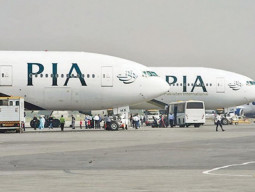
Babur’s travails across his beloved Ferghana and Samarkand, his flight northwards towards Afghanistan — where Kabul and its villages in the north, like Istalif, captured his imagination and his heart — and the conquest of Hindustan are familiar territory to readers in our part of the world.
But for the US, which has lost 1,424 soldiers so far in the war against Osama bin Laden, in the eradication of the religious extremist-terrorist tangle in the AfPak region, in the (misguided) hope that it could help the flame of democracy and egalitarianism in the region burn brighter than ever, the last decade has been a traumatic and terrible waste land.
It’s enough to drive you to new lessons in power politics in the new year, flavoured with the acceptance of the so-called ‘moderate’ Taliban taking some control of Kabul, of oil and gas pipelines snaking across Turkmenistan-Afghanistan-Pakistan and eastwards into India — in the hope that the lure of the black dollar in boom town Hindustan will subdue warring factions and bring about a semblance of peace — and crucially, with the return of Iran into the big, Afghan tent.
America’s new geostrategic designs, so elaborately crafted, are a tribute to Richard Holbrooke whose unfortunate death from a torn aorta a few days ago has thrown Washington into a whirl, not unlike a lost traveller in the Kara Kum desert. The traveller craves the horizon so that he can bring back some direction into his waterless wanderings. In DC these days, with President Obama having decided to drawdown by 2014, there’s much uncertainty about that age-old historical question: What is to be done?
Just like Babur, though, Obama has come to the conclusion that Delhi is at the heart of his legacy; that the big picture cannot be completed without India. That is why India’s special envoy on Afghanistan Satinder Lambah was in Washington to meet Holbrooke & Friends a fortnight ago to talk about that eternal euphemism, ‘the way forward’. As it turned out, he was probably one of the last foreigners to have conversed with Richard, of the lion-heart.
Only a few straws are available to judge the wind these days. The first is that Holbrooke, virtually single-handedly, has brought Iran back into the Afghan conversation. Despite the virtual US blacklisting of Tehran, the Iran representative was present at the US-brokered talks on Afghanistan, in Rome, a couple of months ago. Even after Holbrooke, the Americans have decided that he is going to participate in all the forthcoming discussions.
Holbrooke realised it was not good enough to rely on Pakistan as its chief ally against terror, as the US had done for the last decade. That it was imperative to open the Afghan tent and draw in the neighbourhood. Like Iran. Like India.
The turning point is said to have been the Obama visit to India in November. A throwaway line in the joint statement, issued thereafter, refers to joint projects that India and the US will undertake in Afghanistan. From agriculture to women’s empowerment to tentative first steps like training the Afghan police, either in Kabul or in Delhi.
Every child in India grows up knowing Rabindranath Tagore’s “Kabuliwallah” story by heart. Perhaps it’s time to return the compliment.
Published in The Express Tribune, December 26th, 2010.











1737185197-0/Express-Tribune-(2)1737185197-0-270x192.webp)
1737188551-0/Untitled-design-(97)1737188551-0-270x192.webp)



1737114296-0/Express-Tribune---News-Desk-(4)1737114296-0-270x192.webp)

COMMENTS (10)
Comments are moderated and generally will be posted if they are on-topic and not abusive.
For more information, please see our Comments FAQ